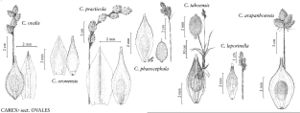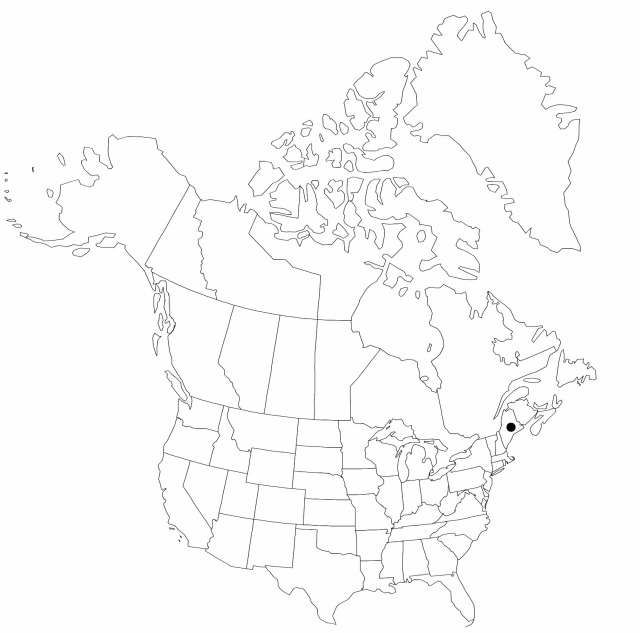Difference between revisions of "Carex oronensis"
Proc. Amer. Acad. Arts 37: 471, plate 1, figs. 15, 16. 1902.
FNA>Volume Importer |
FNA>Volume Importer |
(No difference)
| |
Revision as of 19:09, 24 September 2019
Plants loosely cespitose. Culms 30–100 cm. Leaves: sheaths papillose, summits U-shaped; distal ligules 2.1–4.6 mm; blades 3–4 per fertile culm, 18–23 cm × 2–4 mm. Inflorescences stiffly erect, open, coppery brown, 1.5–3.4 cm × 6–15 mm; proximal internode (1–)3–6(–9) mm; 2d internode 1–4 mm; proximal bracts usually scalelike, occasionally bristlelike. Spikes (3–)5–6(–10), distant, individually distinct, rhomboid-ovoid, 5–10 × 3–7 mm, base and apex tapered. Pistillate scales mid to dark brown, usually with pale midstripe, glossy, lanceolate, (3–)3.5–3.7(–4) mm, subequal to perigynia in length and width, margin white-hyaline, to 0.15 mm wide, apex acute. Perigynia ascending, light green to straw colored, pearlescent, often with adaxial reddish brown blotch, conspicuously 7–15-veined abaxially, usually inconspicuously or conspicuously (6–) 9–12-veined adaxially, lanceolate, plano-convex, 2.9–4.3 × 0.9–1.4 mm, 0.6 mm thick, margin flat, including wing 0.07–0.4 mm wide, unwinged below median; beak brown, white-hyaline at tip, flat, ciliate-serrulate, abaxial suture conspicuous, often with narrow white-hyaline margin, distance from beak tip to achene 1.5–2.4 mm. Achenes ovate, 1.3–1.6 × 0.7-1.4 mm, 0.3–0.5 mm thick. 2n = 74.
Phenology: Fruiting summer (late Jun–mid Jul).
Habitat: Hay fields, forest edges, open woods
Elevation: 30–400 m
Discussion
Of conservation concern.
Carex oronensis is in the Center for Plant Conservation’s National Collection of Endangered Plants.

